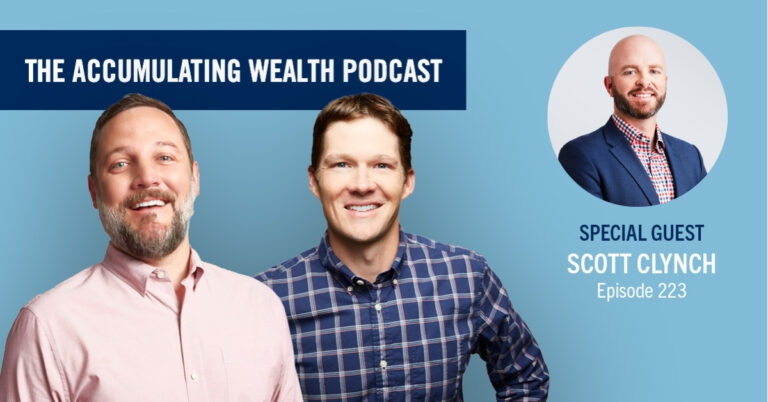Dentists dream big. When I have my first meeting with a client and we try to define their goals, it’s common for their sites to be set on exponential growth for their practice.
I’ll be honest with you, it’s just as common to see more opportunity in effectively managing what they already have. Not only that, but with the undefined goal of a bigger, better practice, it may actually just be adding unnecessary stress to their lives.
There is an emotional side, and there is a technical (or mathematical) side to realizing one’s financial potential. On the emotional side, you may feel you need to grow, grow, grow, but on the mathematical side, that may not necessarily be the case. Taking the time to stop and dive deep into your practice’s numbers can many times offer the clarity needed to better define and achieve your goals.
”The Million Dollar Practice”
In 2014, a new client had the expectation of needing to have a “million dollar practice” in order to achieve their ultimate retirement goals.
It’s important to understand that a million-dollar practice is not a goal, it’s simply a type of milestone. This client’s real goal was to live comfortably now, while saving and preparing to live the same way upon retirement. Cash flow felt tight, both in the practice and at home. This was an issue I could help them with. The good news is she had everything she needed to where she wanted to go, it just needed fine tuning.
CASE STUDY:
- The client was in their late thirties
- They had $57,000 saved for retirement
- The practice collected $600,000 per year
- Debt consisted of $290,000 of practice loans, $116,000 of personal mortgage, $25,000 of student loans, and $8,000 of an auto loan (which should have been a practice loan, but that is a different tax topic for a different day).
Key Concerns:
- Cash feels tight at home and in the practice, and things feel like they are out of control
- Concern with being nearly 40 years old and only $57,000 saved for retirement
- Worried that they could not reach their goals with the practice only collecting $600,000
The Real Goal
Rather than focus on what she wanted her practice to be, the client needed to set her eyes on how her practice could help her get to where she wanted to be in her life. Time and focus was needed to ensure the proper issues were being addressed both in the near term and for the future.
The first issue was to figure out the immediate cash flow stresses. This involved a heavy scrub of practice overhead and living expenses at home. We compared the practice’s expenses to the averages for similar practices. There were a few outliers that we were able to address quickly. For example, lab costs were higher than normal, leading the doctor to determine that she was likely being too lenient with fees for complex cases. We made plans to immediately adjust.
We then examined the expenses at home. This entailed a hard look at absolute costs and “fluff” costs. There was some opportunity for structure around the fluff to ensure it did not get out of control, but for the most part the expenses at home were well-controlled.
Routine living expenses were healthy at 40% of income, but lack of focus allowed for occasional splurges which would make things feel tight. Given this, a new strategy could maintain their lifestyle spending at its current level, while still lowering the stress related to cash.
We determined that maintaining a certain level of cash on hand in the practice and at home would provide security and allow the doctor to relax, rather than stress over paying the monthly bills.
For the practice, we recommended that one to two months of expenses and debt payments (when combined with accounts receivable) would provide enough cushion to absorb the ebbs and flows of cash.
For the personal account, we recommended three-months saved in cash to cover emergencies. Three months is typically recommended as it is the average length of time before disability insurance takes effect.
Once the bank accounts were sufficient, and there were no immediate needs for new equipment or staff, we could focus on the ultimate goal of preparing for retirement. We determined that maximizing a 401(k) and Roth IRAs for the doctor and spouse would get them to the retirement they desired. We maximized these accounts over the course of the next 12 months and have continued to do so ever since. With both the doctor and spouse contributing $18,000 from payroll, and the doctor able to contribute an additional $35,000 in profit sharing, leveraging tax-deferred retirement savings allowed them to reduce income taxes to help free up cash and essentially fund itself. Once the monthly bills, debt and taxes were paid, and 401(k) funded, there was enough cash remaining to enjoy life.
Milestones
Four years later, the client and spouse remain on pace to reach their goals. Their cash balances have steadily grown, they have upgraded their home, and their retirement savings have grown exponentially.
More significantly, stress levels are low and spirits are high. This client’s financial plan is on cruise control, and the practice has grown at its own pace. With this strategy, the clients have their clearly defined end goal in sight while effectively managing one practice. The pressure to open another practice has lifted, and the client can relax and focus on her passion.
Remember your career is a lifelong journey. Just like anything else, dental practices need to be able to change strategies and direction depending on the conditions life serves us. No journey will be predictable, and no financial plan should be stagnant. Changes are part of the game, and doctors and financial advisors need to be united and ready for what comes next.
Ready to start reaching milestones along the journey to your financial goals? Contact a member of our team to help you get started.
Cain Watters is a Registered Investment Advisor. Cain Watters only conducts business in states where it is properly registered or is excluded from registration requirements. Registration is not an endorsement of the firm by securities regulators and does not mean the adviser has achieved a specific level of skill or ability. Request Form ADV Part 2A for a complete description of Cain Watters investment advisory services. Diversification does not ensure a profit and may not protect against loss in declining markets. Past performance is not an indicator of future results.














